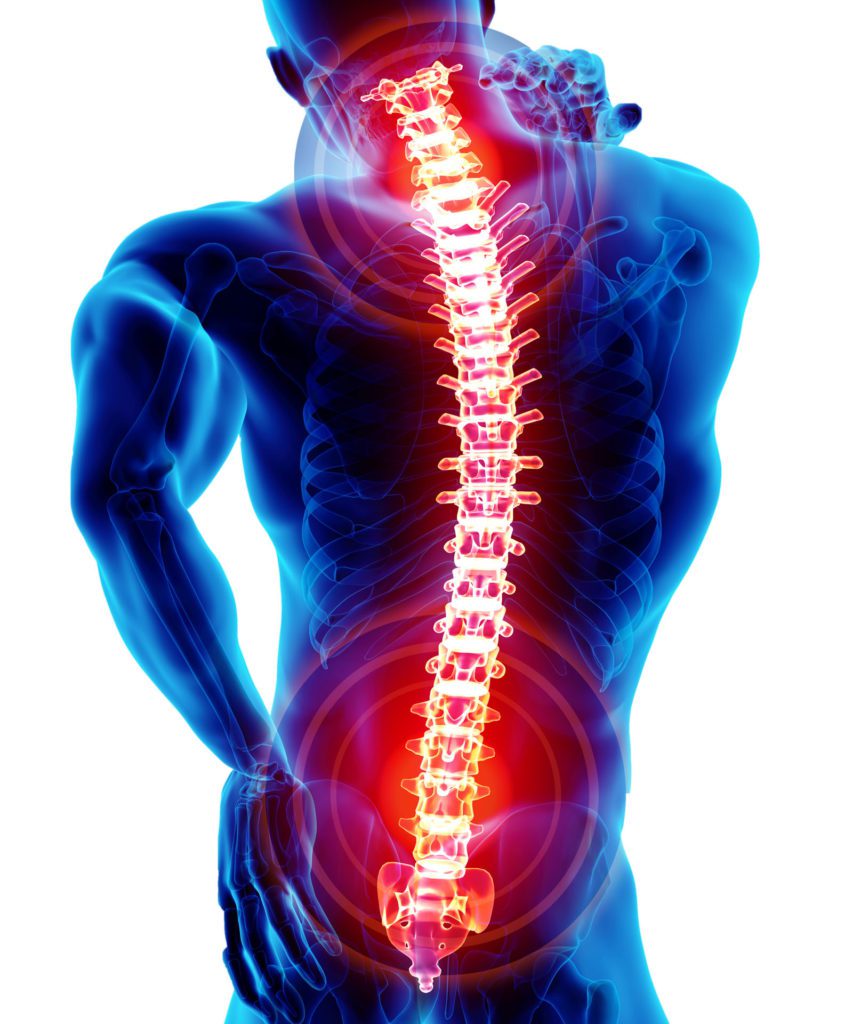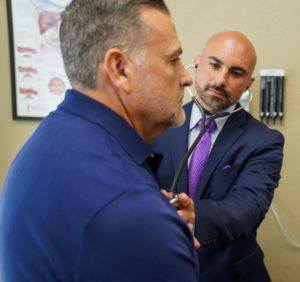Head-To-Toe-Health
The Brain
Genetic Testing for Epilepsy

In the U.S., approximately three million adults and more than 450,000 children have epilepsy, a brain disorder that causes seizures, according to the Centers for Disease Control and Prevention.
“Epilepsy is diagnosed when someone has had two or more seizures without a reversible provoking factor, such as hypoglycemia,” says Cherie Herren, MD, an epileptologist/neurologist at Oklahoma Children’s Hospital OU Health.
OU Health offers the only Level 4 epilepsy center in the state, providing multidisciplinary care including surgical treatment, dietary management and genetic evaluation and treatment.
“We have had significant advancements in genetic testing for epilepsy,” says Herren. “We now have over 280 different genes we know are associated with epilepsy that we can test for. Early in my training, this number was more like five to ten.”
Herren says in the past, all seizures were treated similarly, with nonspecific medications to manage symptoms.
“As genetic testing has progressed, we are starting to find more treatments that are specific to the abnormal gene, whereby we can focus on the underlying cause, not just the symptoms,” she says. “This has allowed us to tailor treatments better for patients.”
New technologies are also being used in the surgical treatment of epilepsy, including stereo EEG, laser ablation, deep brain stimulation and responsive neuro-stimulation.
Herren also notes that while a ketogenic diet has been used to treat epilepsy since the 1990s, in the past ten years there have been advances in other diets that proved helpful, including a modified Atkins diet and a low glycemic index diet.
The Ear, Nose and Throat
Jeremy Foon, MD, an otolaryngologist (ENT specialist) with Eastern Oklahoma Ear, Nose and Throat in Tulsa, treats a range of conditions, from hearing loss and sinus issues to tinnitus –a ringing sound in the ear – voice disorders and head and neck cancer.
Hearing Loss
“Most hearing loss in adults is attributable to degeneration of the inner ear and the hearing nerve (cochlear nerve), also known as sensorineural hearing loss,” says Foon. “Age is the single biggest factor, followed by genetics and loud noise exposure.”
Foon says everyone develops sensorineural hearing loss if they live long enough, and it typically starts in the higher tones.
“The hearing nerve and inner ear wear down over time,” he says. “Hearing aids can help, but many people don’t qualify for hearing aids if their hearing loss is not severe enough.”
Foon says tinnitus is a persistent sound, sometimes described as ‘ringing,’ ‘crickets’ or ‘buzzing,’ that is often associated with high tone or high frequency sensorineural hearing loss.
“Many people see me with tinnitus that is attributable to high frequency hearing loss,” he says. “However, they are often unaware of this hearing loss because it is only at high frequencies that don’t affect them much on a daily basis. The way to prove this is with a hearing test.”
When it comes to protecting your ears, he reminds to never put anything in your ears – including cotton swabs – and to shield your ears from loud noises.
With the continued popularity of earbuds and in-ear headphones, Foon says they’re O.K. if used properly. Damage occurs if the volume is too loud. Experts recommend keeping the volume between 60 and 85 decibels or following the 60/60 rule: listening up to 60% of your device’s maximum volume for no more than 60 minutes a day.
Allergy and Sinus Issues
For those suffering with allergy and sinus issues, Foon says nasal rinses can help clear the sinus canal, but to use them safely, with only distilled water or sterilized tap water. He recommends staying away from oral and nasal decongestants such as Afrin, Sudafed and other medicines with added decongestants such as Allegra-D or Mucinex-D.
“These medicines are only good if used minimally and in moderation,” says Foon. “These type of decongestants have an addictive quality and people form a dependency to them. Over time, the nasal sprays begin to destroy the vasculature or blood vessels of the nose and can lead to chronic rebound congestion. In addition, decongestants strain the blood vessels throughout the entire body and can increase blood pressure and exacerbate other underlying health issues. If you’re going to use them, use them sparingly – two or three days, then stop.”
Head and Neck Cancer
“If anyone has a firm neck mass that’s not decreasing over time, new onset hoarseness and/or new onset pain with swallowing that doesn’t improve over time, then they should get it checked,” says Foon. “It’s the time component that’s important.”
The Heart

The Importance of Screenings
Heart disease is the No.1 killer in the United States, and stroke is No. 5, according to the American Heart Association (AHA). And among AHA’s recommendations for preventing heart disease and stroke is knowing your risk of having a cardiovascular event.
To help patients better understand their risks, the Heart Hospital at Saint Francis, Saint Francis Hospital Muskogee and Saint Francis Hospital Vinita offer two heart health screening options at a reduced rate to anyone 18 years of age and older, and they do not require a referral or physician’s order.
The first option, the cardiac calcium screening, is a CT scan, with no IV required, that measures the calcified plaque in the arteries that supply blood to the heart.
“We place four EKG patches on the patient’s chest and complete the painless CT scan,” says Karen Quinn, RN, BSN, MS, the clinical manager of non-invasive cardiology at the Heart Hospital at Saint Francis. After the scan, the technician provides preliminary results, and patients receive a score indicating their probability of having coronary disease.
“A cardiologist will read and finalize your test,” says Quinn. “We recommend patients list a primary care physician (PCP) and a final result will be sent to their doctor, who will determine if you need more cardiac testing.”
She says individuals with no family history of coronary disease should have a cardiac calcium screening at age 40, while those who have a family history or other risk factors should be tested earlier and repeat the test every three to five years.
The second option includes a set of three screenings. The carotid disease screening detects plaque in arteries that can cause stroke; the abdominal aortic aneurysm (AAA) screening checks for enlargement within the abdominal aorta which suggests a risk for rupture; and the peripheral arterial disease (PAD) screening records blood pressure in both legs to evaluate blood circulation.
“It is medically recommended that all men over the age of 65 have an aorta screening to determine if they have an abdominal aneurysm,” says Quinn.
For the carotid disease and AAA screenings, a clear gel is applied to a patient’s neck and abdomen and an ultrasound wand is used to acquire images, and access blood flow and potential abnormalities of the carotid arteries and abdominal artery.
“The PAD study uses blood pressure cuffs and an ultrasound wand to measure pressures in the arms and legs,” she says. “The test determines if there is reduced blood flow to your feet and legs, which some refer to as hardening of the arteries. Many people do not experience any symptoms with peripheral artery disease, so screening people with risk factors is critical.”
Following the screenings, a technician provides the preliminary findings and a cardiologist interprets and finalizes the test.
The Stomach and Gut

The Link Between Gut and Wellbeing
Having a ‘healthy gut’ has become a popular topic, as research continues on the link between the health of a person’s gastrointestinal (GI) system and their overall physical and mental wellbeing.
“When I talk about a healthy gut, I’m talking about mitigating inflammation throughout the GI system,” says Castel Santana, MD, a family medicine physician with Norman Regional Wellness Clinic in Norman. “Along with inflammatory bowel disease and issues involving the gallbladder or liver, inflammation can also contribute to the development of diabetes, heart disease, anxiety and depression. Certain bacteria in the gut can put you at risk for certain disease pathways.”
The gut microbiome is made of trillions of bacteria, and while the majority of the bacteria is good for us, problems can emerge when there is an overgrowth or undergrowth of normal bacteria. This imbalance can be caused by a variety of sources, including our environment, diet, medications, stress and fitness levels.
“The bacteria in our gut helps break down food, relays information through messenger RNA, and at times can affect our personalities,” says Santana. “There’s been studies where certain bacteria is taken out of the gut and a person’s anxiety and depression go away, but once it’s returned, the anxiety and depression come back. There’s a lot related to your mental wellbeing.”
Santana says the gut microbiome also stimulates the vagus nerve, the largest nerve in the body that’s responsible for regulating internal organ functions.
“The vagus nerve affects everything from your adrenal glands and hormones to your heart rate and blood pressure,” he says. “In addition, 80% of your immune cells are in your GI tract.”
Symptoms of gut inflammation can include abdominal bloating, diarrhea, constipation, mental fogginess, skin issues and joint issues.
“Two tests that give us good information on gut inflammation is a food tolerance test, which is a blood test, and a stool test for an analysis of the good and bad bacteria that might be present, along with any enzyme deficiencies,” says Santana.
To support a healthy gut, Santana says a good place to start is your diet, and recommends the 80/20 rule, where you try to eat healthy 80% of the time and leave 20% for eating out or special celebrations.
The Spine and Back

Improving Back Pain
Chronic back pain can often be immobilizing, and is the most common type of pain reported by patients. It causes more disability worldwide than any other condition, according to the Centers for Disease Control and Prevention.
Afflicting the young and the old, problems with the spine can be caused by injury, diseases, bulging or ruptured disks, or osteoarthritis.
Kris Parchuri, DO, an orthopedic surgeon with Advanced Outpatient Surgery of Oklahoma, and Spine and Orthopedic Specialists in Tulsa, says a common condition in the elderly is spinal stenosis.
“It’s a narrowing of the spinal canal, causing pressure on the spinal cord and nerves, resulting in back and neck pain along with numbness and tingling in the legs and arms,” he says. “For the younger patient population, [common conditions] are usually a herniated disc or a muscle strain. A herniated disc can also result in similar symptoms as spinal stenosis.”
Risk factors for developing back issues include age, fitness level, extra weight, improper lifting and smoking.
“Weight is a big factor, in that our spine takes the brunt of the force with excess weight,” says Parchuri.
To support a healthy spine and flexible back, he recommends doing what you can to avoid injury by staying active, maintaining strong core muscles and always using proper lifting techniques.
Technical Advancements
Parchuri specializes in treating spine-related diseases and disorders, and he says one of the major technological advancements within his field has been artificial disc replacement.
“Similar to replacing an individual’s knee or hip, we can replace someone’s disc with a mechanical prosthesis,” he says. “The advantages include maintaining range of motion, a much faster recovery, and the decrease in need for future surgery at adjacent discs.”
The Bones and Joints
Keeping You On the Move
Knee and hip replacement procedures are among the most common elective surgeries in the United States. The American Academy of Orthopaedic Surgeons estimates 4.7 million Americans have had knee replacements, and 2.5 million have had hip replacements.
The decision to undergo a joint replacement varies by patient, says Yogesh Mittal, MD, an orthopedic surgeon with The Orthopaedic Center and CORE Hospital. Reasons include uncontrolled pain, decreased mobility, interrupted sleep and a poor quality of life.
Mittal says the use of robotics in surgery has revolutionized the industry and his practice.
“We now have the ability to create a 3-D model of the hip or knee and then personalize/customize the implants specifically to their anatomy,” he says. “This allows for an incredibly precise and accurate placement of the implants, which has been shown to decrease post-operative pain, improve healing time, and expected increase in life expectancy of the implants.”
In addition, hip and knee replacements are lasting longer, with estimates of knee replacements functioning up to 20 years and hip replacements up to 25 years.
“Implants are lasting longer because the materials from which they are made are getting better and more resilient to wear and failure,” says Mittal. “Also, the technology, such as robotics, are allowing for better placement, which will also improve longevity.”
Running – Pros and Cons
While exercise is critical in controlling one’s weight, some exercises cause more joint stress than others. For instance, if running is your go-to workout, you may be concerned about the pressure it places on the knees, hips and ankles.
“Running as a cause of arthritis depends on a person’s genetics and biomechanics,” says Mittal. “It’s a great cardio exercise, but any impact loading exercises can put stress on the joints – so weight control and good footwear is important. Once some arthritic change occurs, even if mild, then running and other loading exercises can accelerate joint failure. At times, it makes sense to shift to biking and/or water aerobics.”

All Things Covid
The Impact of Viral Variants
As viruses mutate, some mutations become more dominant, such as the Delta variant of SARS-CoV-2; and as COVID-19 continues to afflict Oklahomans, there is exceeding concern regarding the effects of these variants.
The Delta Variant and Breakthrough Infections
“The variants that have been challenging have had mutations to portions of the spike glycoprotein, and those mutations have done two things: make the variant more efficient at attaching to human receptors … so you are more likely to get infected if exposed; and reduce the effectiveness of your antibodies that your body generates in response to vaccination or previous COVID infection. Hence, we are seeing ‘breakthrough’ infections,” says Dale Bratzler, DO, MPH, OU Health’s Chief Quality Officer and University of Oklahoma’s Chief COVID Officer.
He says the Delta variant is very efficient at attaching to human receptors and grows and replicates much faster than the original alpha variant.
“If you are infected with the Delta variant, vaccinated or not, you can carry 1,000-1,200 times more virus in your airways than a person who was infected with the original alpha variant,” he says. “So when you breathe, cough, sneeze, sing … you spread a lot of virus. Even short exposures to someone carrying the Delta variant may result in you getting infected.”
Bratzler warns that some age groups are highly vulnerable.
“The majority of children ages 12-17 are still not vaccinated, so when you bring those groups of kids together in close settings, like a classroom, you increase the likelihood of infection,” he says. “I don’t think the Delta variant preferentially infects kids – it just spreads quickly among unvaccinated individuals.”
When asked if the Delta variant is more dangerous, Bratzler says that while the Delta variant is more contagious, there is controversy on whether it is more virulent, or whether or not it causes more severe illness.
“Studies have been mixed on this, but it is certainly true that we are seeing more children end up needing ICU care than we did with the alpha variant,” he says.
Emerging Variants
Bratzler says there are currently two additional variants being watched.
“The Lambda variant, which came out of Peru, has been found in the United States and in Oklahoma,” he says. “While the Lambda variant does not appear to be more contagious than the Delta variant, some studies suggest that it is more resistant to your antibodies generated from vaccination or prior COVID infection.”
The Mu variant, also known as B.1.621, was first identified in Colombia in January 2021.
“As with most viruses, you cannot stop them from spreading across borders,” says Bratzler. “The variant has been identified in Europe and the United States. This variant, too, does not seem as susceptible to neutralization with antibodies induced by vaccination or previous COVID infection.”
Information Overload
Anuj Malik, MD, an infectious diseases consultant and director of infection prevention and control at Ascension St. John Medical Center in Tulsa, offers the following recommendations to help filter the medical information you absorb online:
Carefully review research.
“Medical studies that are truly reliable are called randomized double blind controlled studies,” says Malik. “Patients with a certain condition are randomly either given a treatment or a placebo. Neither the doctor nor the patient knows who gets what treatment. This study type removes biases of doctors and patients.”
He says within these studies, research staff, who are also unaware of which patient receives medicine or a placebo, record whether patients are improving or not. A committee then reviews the information from all hospitals where the study was completed to determine whether the treatment helped.
“This is the only way to really tell if a treatment works for the condition under study,” says Malik, adding that when multiple studies have different results, experts combine those studies in a ‘meta-analysis’ to conclude whether the treatment truly worked.
Malik says that oftentimes, the medical studies that gain attention and are widely circulated are observational studies, and these studies can draw the wrong conclusions.
“Observational studies are more like a hint that a medicine works, but they don’t prove anything until multiple similar, large studies with many patients from many hospitals show the same thing,” he says.
Seek out reputable sources.
Malik says studies are generally more accurate when published in a reputable journal of medicine.
“Examples of very good journals, read by millions of doctors and scientists around the world, include the New England Journal of Medicine, The Lancet, Journal of the American Medical Association, Clinical Infectious Diseases, and Nature and Science are fantastic,” says Malik.
Because these journals are read by physicians and researchers around the world, any mistakes within the articles are often identified quickly, says Malik, and the authors of the study must respond to any criticism their study receives. This process increases the reliability of information that’s shared.
Help stop the spread of misinformation.
Malik believes that if everyone takes the time to carefully examine information before sharing, then we can reduce the amount of misinformation in the public space.
“Use trusted resources – organizations of scientists, doctors, experts from around the world, governments, non-profits, high-quality medical journals, and high-quality newspapers and magazines,” says Malik. “Then, focus on which facts are generally accepted to be true by most of these sources. Those facts are likely true. If you have questions or clarifications, then talk to your doctor or your trusted local expert.”






























